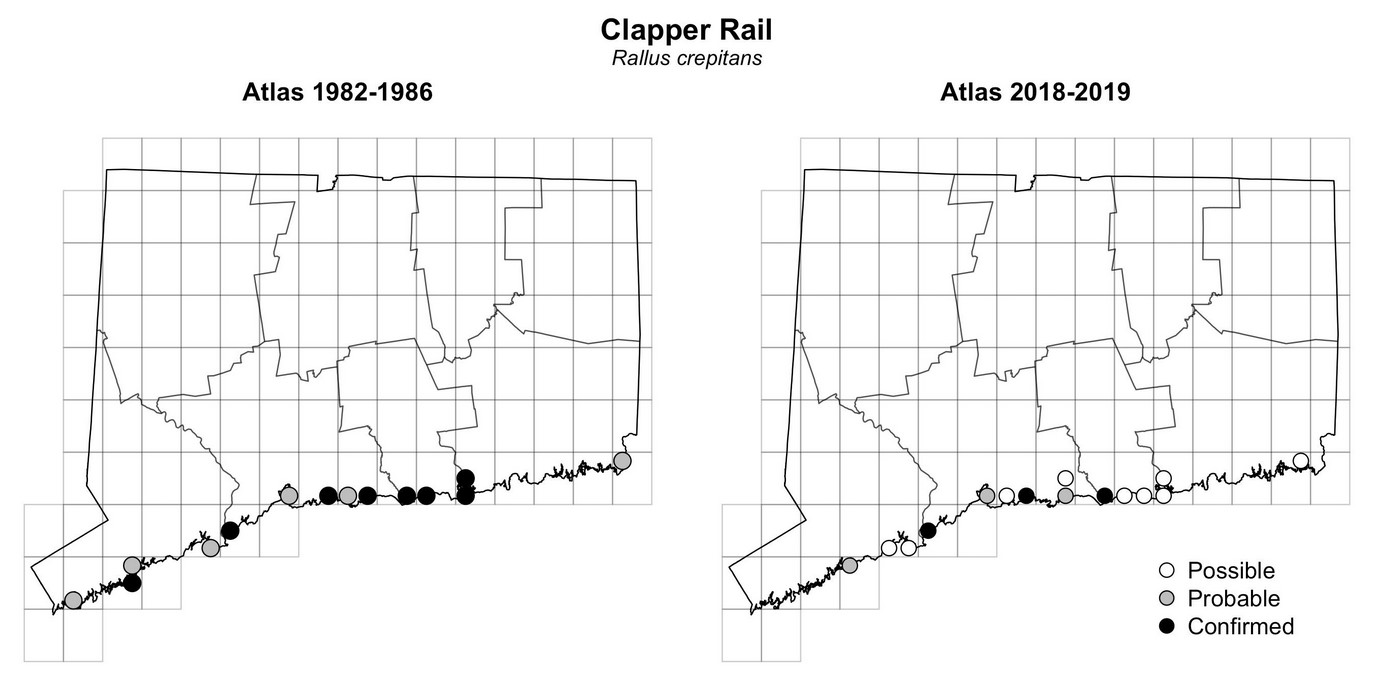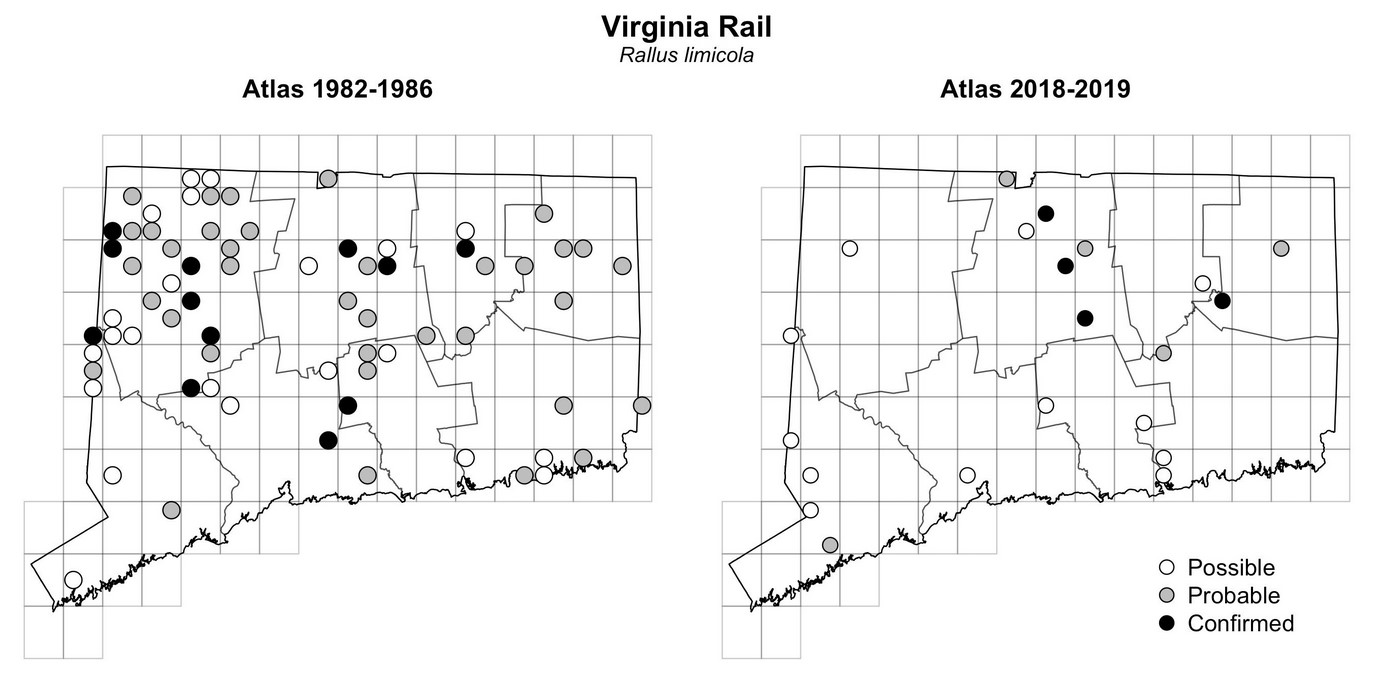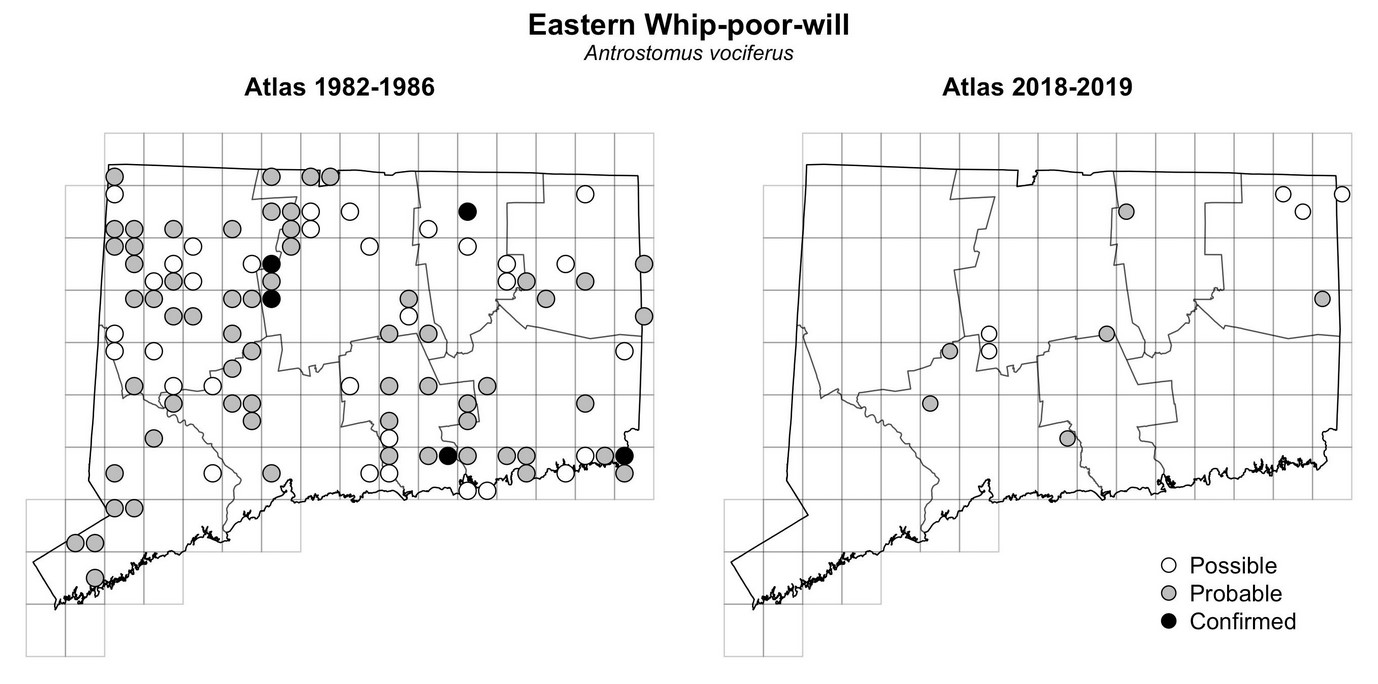Night birds are often among the most under-reported species in bird atlases. Precisely because they are hard to detect, however, they are also among those species we most need to learn about, because there are few other good sources of information about most of them.
Last week I was lucky enough to hear the lingering yellow rail at Ragged Rock Creek marsh at the mouth of the Connecticut River in Old Saybrook. This bird is presumably a migrant, given how far south of the known breeding range for the species we are, but while waiting for it to call, we also heard both Virginia and clapper rails vocalizing from the marsh. Since both species had been reported at this site more than a week before, and since we are within their safe dates, I was able to upgrade both to probable breeders (breeding code T, or eBird’s S7, which is equivalent).
The maps below compare atlas data for these two rails to those from the 1980s. Maps for clapper rails suggests quite good coverage, although there are blocks where they were found in the 1980s that lack recent records:

In contrast, Virginia rail records are way down compared to the 1980s. Whether this reflects a real decline is hard to say so early in the atlas project – it could just be that less searching has been done so far – but the comparison shows that it is important for us all to go out and check marshes in our blocks for calling birds:

Neither clapper nor Virginia rails are strictly nocturnal, and both will call during the day, especially early in the morning. Eastern whip-poor-wills, though, are true night birds, starting to call only as it really begins to get dark. Last Friday, I also managed to hear this species; this time at the only site that I know of where they remain in Tolland County.
Whip-poor-wills are widely known to have declined in the state and in adjacent areas. And this decline is hinted at in the atlas data collected so far:

Again, though, at this stage of the atlas project it is impossible to know how much of this difference is due to decline and how much due to lack of searching. This year, we have already added records from Barn Island Wildlife Management Area in Stonington – which is well known to support the species (these records are recent and do not appear on the map). Determining the severity of the decline will require that people go out in the evenings and listen after dark – especially in areas that have had whip-poor-wills in the past – to see what they can find.
Given the difficulty of finding any of these species, please report them from anywhere that you find them – regardless of whether you are in a block that you have adopted, and especially in blocks not represented on the maps above.